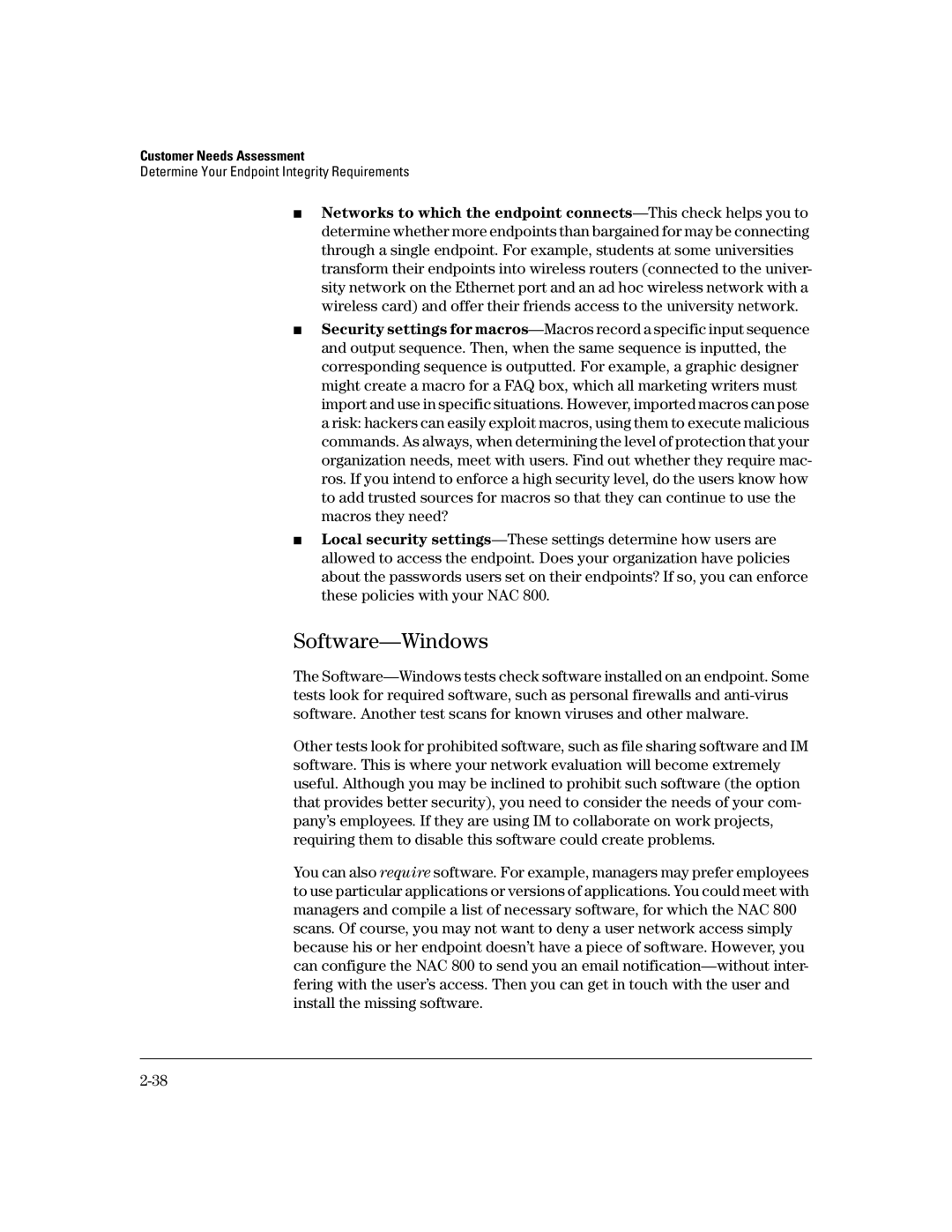Customer Needs Assessment
Determine Your Endpoint Integrity Requirements
■Networks to which the endpoint
■Security settings for
■Local security
Software—Windows
The
Other tests look for prohibited software, such as file sharing software and IM software. This is where your network evaluation will become extremely useful. Although you may be inclined to prohibit such software (the option that provides better security), you need to consider the needs of your com- pany’s employees. If they are using IM to collaborate on work projects, requiring them to disable this software could create problems.
You can also require software. For example, managers may prefer employees to use particular applications or versions of applications. You could meet with managers and compile a list of necessary software, for which the NAC 800 scans. Of course, you may not want to deny a user network access simply because his or her endpoint doesn’t have a piece of software. However, you can configure the NAC 800 to send you an email
